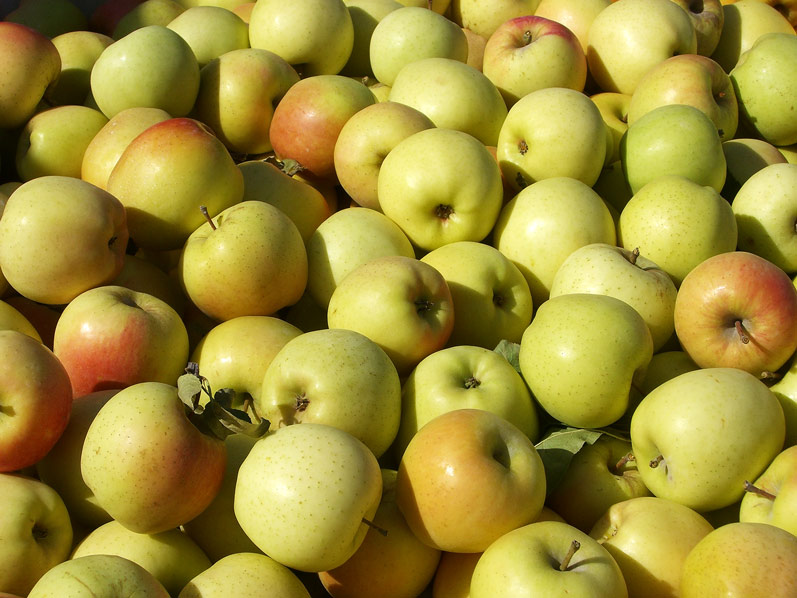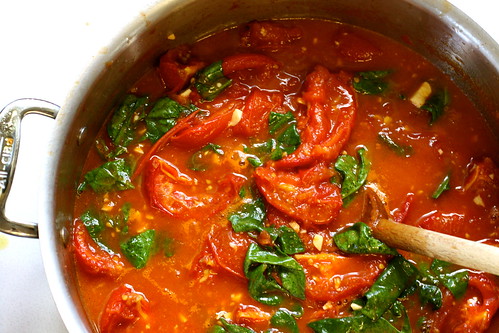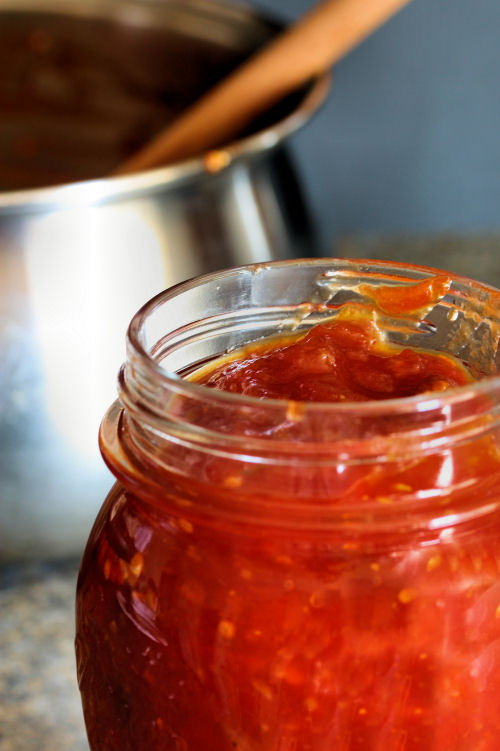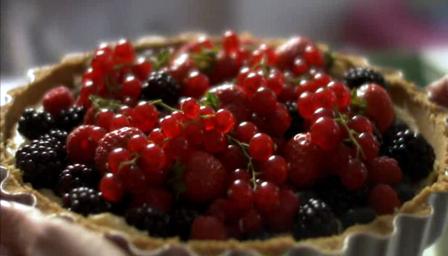Behold the apples’ rounded worlds:
juice-green of July rain,
the black polestar of flowers, the rind
mapped with its crimson stain.
The russet, crab and cottage red
burn to the sun’s hot brass,
then drop like sweat from every branch
and bubble in the grass.
They lie as wanton as they fall,
and where they fall and break,
the stallion clamps his crunching jaws,
the starling stabs his beak.
In each plump gourd the cidery bite
of boys’ teeth tears the skin;
the waltzing wasp consumes his share,
the bent worm enters in.
I, with as easy hunger, take
entire my season’s dole;
welcome the ripe, the sweet, the sour,
the hollow and the whole.
juice-green of July rain,
the black polestar of flowers, the rind
mapped with its crimson stain.
The russet, crab and cottage red
burn to the sun’s hot brass,
then drop like sweat from every branch
and bubble in the grass.
They lie as wanton as they fall,
and where they fall and break,
the stallion clamps his crunching jaws,
the starling stabs his beak.
In each plump gourd the cidery bite
of boys’ teeth tears the skin;
the waltzing wasp consumes his share,
the bent worm enters in.
I, with as easy hunger, take
entire my season’s dole;
welcome the ripe, the sweet, the sour,
the hollow and the whole.
Laurie Lee
My apple crop is greatly diminished this year, and I could see blackbirds hopping through the branches pecking at them, James Grieve are a highly scented variety, and seem to attract birds and wasps alike, in their droves - some years you can hardly see the tree for starlings gorging themselves. So yesterday I picked all that I could reach - maybe a bucketful - as we are on holiday next week - and I fear there would be no apples left for us on our return. They are not a keeping variety but will be alright for a couple of weeks so I shall be making a few pies and crumbles with them as well as a bit of juicing.
 |
| via |
A Deeply Appley Apple Crumble
A sublime crumble is probably one where the fruit lies somewhere between thick juice and soft nuggets of flesh. For me, the filling should be a mixture of barely recognisable chunks on the verge of collapse and a sort of sweet slush the texture of melting snow.
Nigel Slater
 |
| recipe here |
 |
| via pinterest |
My Golden Delicious tree doesn't have a single apple on it this year - last year it was heaving.
 I had so many that I was giving carrier bags full away and feeding them to the sheep - if only I had had an apple press. Alas, this year is a different story. Hopefully the tree will feel rested and give me a bountiful harvest next year.
I had so many that I was giving carrier bags full away and feeding them to the sheep - if only I had had an apple press. Alas, this year is a different story. Hopefully the tree will feel rested and give me a bountiful harvest next year. |
| via pinterest |
 |
| Carl Larsson - Apple Harvest |
 |
| via pinterest |
 |
| Apple Orchard, Kent - John Minton |
let yourself sit by an apple tree and listen to the apples falling all around you in heaps, wasting their sweetness. tell yourself that you tasted as many as you could."
--Louise Erdrich "The Painted Drum"































